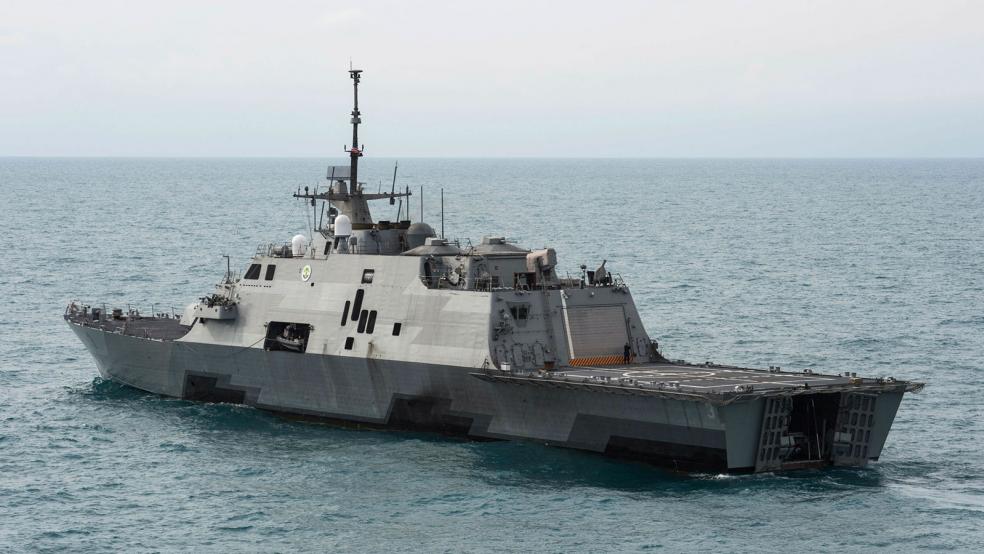The U.S. Navy shouldn’t spend any more money on the Littoral Combat Ship, a vessel designed to be small and speedy in shallow waters close to shore, because it’s unclear if it has enough firepower or can even survive in combat, according to the government’s top watchdog agency.
A Government Accountability Office (GAO) study released late last week concluded that the "actual lethality and survivability performance of LCS is still largely unproven through realistic testing,” even though 24 ships have already been built or are under construction.
Related: Why the Pentagon Is Cutting Back on Its New Combat Ship
The LCS uses an aluminum alloy that’s unlike any used in other Navy ships, cutting the ship’s weight to increase its speed. However, aluminum loses its strength faster than steel at high temperatures. The GAO states that while the Navy has identified the flaw and conducted tests, the service lacks enough data on how fire or underwater explosions might affect the ship’s hull, and won’t have the information until 2018.
"The vulnerability of the ship’s hull to various sea conditions also remains unknown," the report said. "Due to the dynamic nature of waves, the Navy cannot rely on modeling and simulation alone to provide an accurate assessment of a ship’s performance in rough seas."
The two deficiencies led the GAO to recommend the service hold off on spending the $1.4 billion it requested for fiscal 2016 to buy three more ships.
The Navy was expected to spend around $37 billion on the LCS program. But that was before Defense Secretary Ash Carter sent a letter to Navy Secretary Ray Mabus earlier this month instructing him to cut the service’s projected purchase from 52 to 40 vessels; “downselect” to one ship model by fiscal 2019, rather than continue with the two designs that exist today; and put the savings toward upgrading other ships and buying more F-35 Joint Strike Fighters.
Related: The Navy’s New $362 Million Ship Needs a Tow to Get Home
The directive leaves the total cost in flux, especially since Capitol Hill lawmakers haven’t had a chance to scrutinize Carter’s proposed plan yet. Already the congressional delegations from Wisconsin and Alabama, where the vessels are built, have vowed to fight the move.
The GAO report, a classified version of which was completed in July, likely influenced Carter’s thinking on the fate of the troubled LCS effort. The program has been besieged with cost overruns and schedule delays.
Daniel Gouré, a national security and military analyst with the Lexington Institute, wrote that Carter’s instruction “may have been to encourage the other service secretaries as well as the leadership of the services to get with the program which is, to use current jargon, capability over capacity.”
Put another way: stick with weapons and equipment that already exist or are within reach and can be used by the maximum number of people, rather than pursue costly efforts that could lead to painful cuts elsewhere.
Related: Congress Showers the F-35 Program with Cash
Gouré said the three military branches are “falling behind when it comes to the qualitative arms race with a range of opponents. For the Navy, the Army and perhaps even the other services, this means sacrificing quantity in order to bolster quality.”





